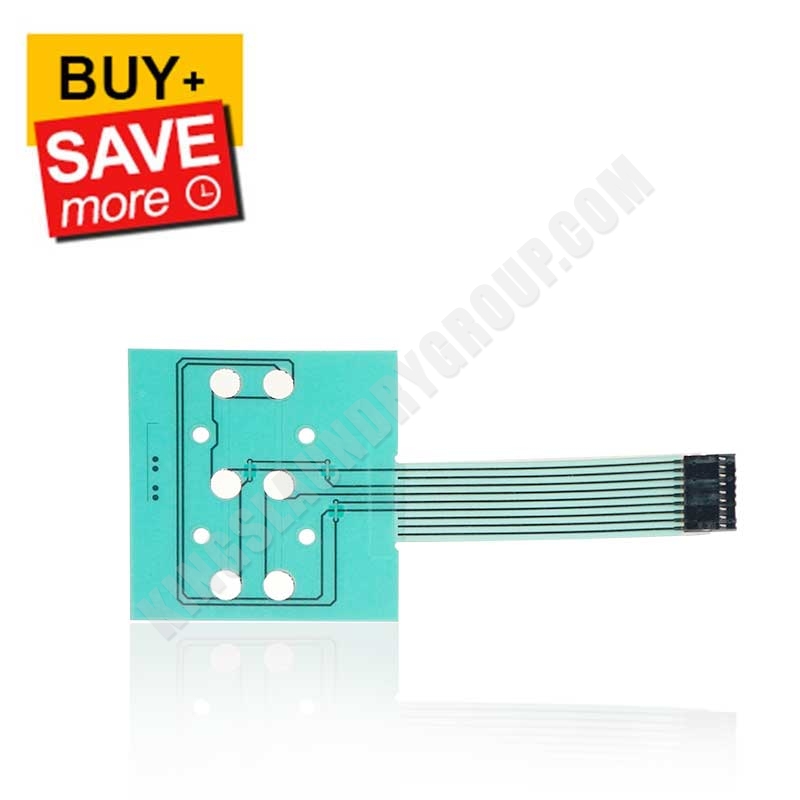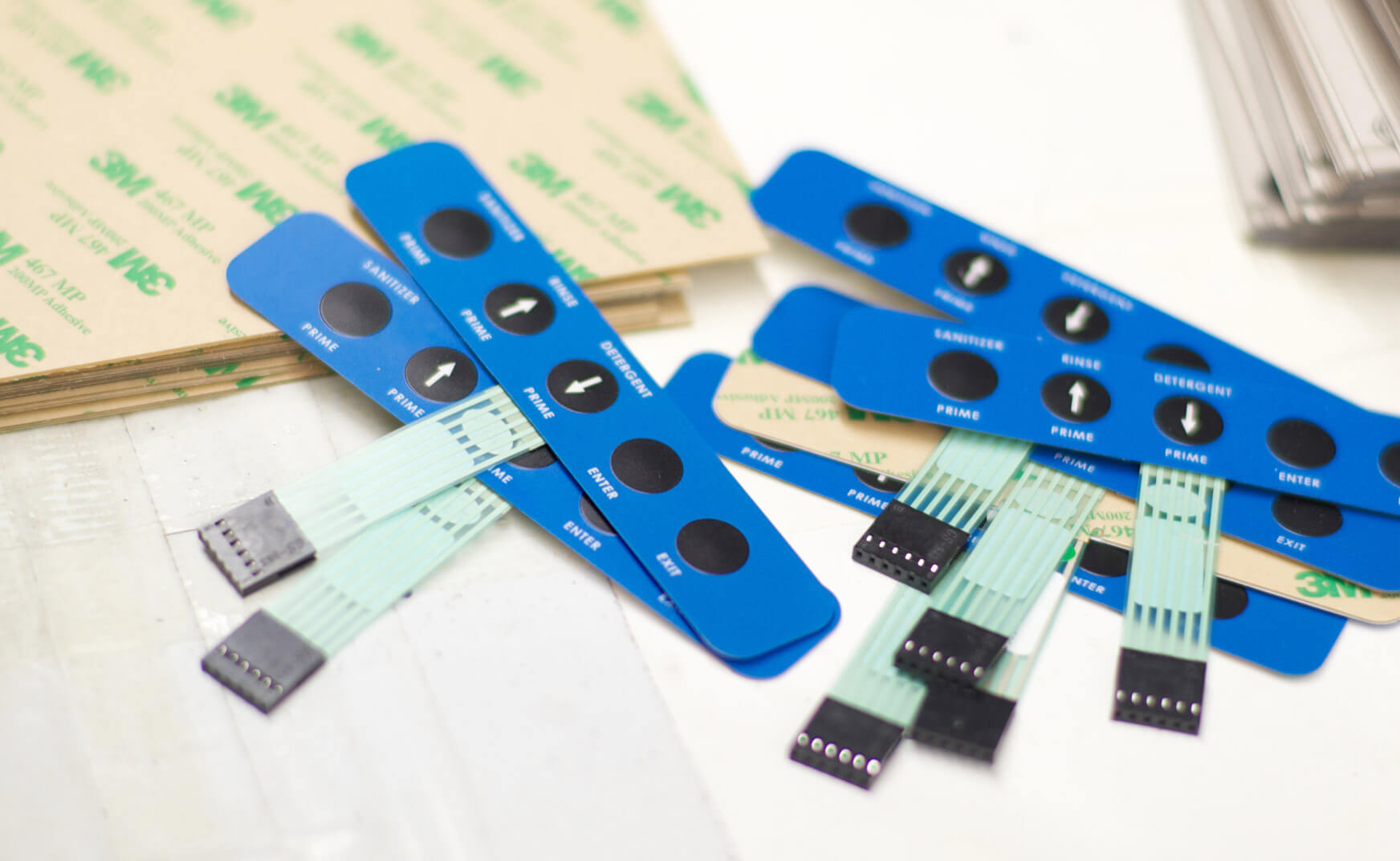Why Membrane Switches Are Necessary for Durable Control Solution
Membrane switches play a pivotal role in making sure the longevity and dependability of control systems across different markets. Their one-of-a-kind building and construction allows them to sustain tough environmental variables such as moisture, temperature level extremes, and physical wear. This strength not only prolongs the life-span of the systems they serve yet also decreases maintenance demands. As we explore the complex advantages of membrane layer switches, it ends up being evident that their significance transcends mere functionality, affecting user experience and functional efficiency. What further ramifications do these features hold for the future of control system style?
Review of Membrane Buttons
Membrane switches are functional and trusted elements commonly utilized in various digital control systems. The visuals overlay gives both functional and visual style, while the spacer layer makes certain that the buttons are activated just when pressed.
Membrane layer switches are often favored in applications needing a compact and light-weight layout, making them suitable for handheld gadgets, clinical tools, and commercial equipment. They can be tailored to meet details user requirements and can include various features such as backlighting, tactile responses, and several colors. Moreover, membrane switches are resistant to dust, dampness, and pollutants, making them appropriate for atmospheres where toughness is necessary.
Advantages of Toughness
In several applications, the durability of membrane changes offers significant advantages that enhance their overall efficiency and integrity. These switches are developed to endure extreme environments, making them suitable for use in requiring problems such as high humidity, severe temperatures, and exposure to chemicals. Their durable construction helps to prevent damage from physical influence, making sure long-lasting capability and minimizing the need for constant replacements.
Additionally, membrane buttons are resistant to put on and tear, which is essential in applications where constant interaction happens. This durability converts to lower upkeep expenses, as companies take advantage of minimized downtime and fewer solution interruptions. Furthermore, the encapsulated design of membrane switches over secures inner elements from dirt and dampness access, additional adding to their lifespan.
An additional benefit is their capacity to maintain constant performance in time. With a high tolerance for mechanical stress, these switches protect their tactile feedback and electric integrity, ensuring user satisfaction. Inevitably, the durability of membrane switches over not just improves functional performance but likewise fosters confidence in their integrity, making them a recommended option for control systems across different industries.
Applications in Various Industries
Long lasting control systems employing membrane switches locate substantial applications throughout a series of sectors, each gaining from the special characteristics these buttons supply. In the medical sector, membrane switches are essential for devices such as patient displays and diagnostic equipment, where integrity and simplicity of cleansing are critical. Their resistance to dampness and impurities guarantees they keep capability in sterilized settings.
The auto sector leverages membrane buttons for control panel controls and infomercial systems, where they offer smooth, low-profile interfaces that improve user experience. These buttons are likewise created to hold up against rough conditions, consisting of direct exposure to extreme temperatures and vibrations.
In commercial setups, membrane layer switches are generally utilized in machinery control panels, using responsive comments and sturdiness required for high-usage applications. Their capability to withstand chemicals makes them appropriate for her latest blog manufacturing environments where spills and pollutants are constant.

Consumer electronics, such as cooking area appliances and push-button controls, also use membrane layer buttons for their flexibility and cost-effectiveness. Overall, the flexibility and durable nature of membrane layer switches make them crucial throughout numerous sectors, guaranteeing reliable procedure and durability in control systems.
Design and Visual Appeal
While visit homepage capability is vital, the style and visual appeal of control systems outfitted with membrane switches play a vital role in customer interaction and total experience (membrane switch). The aesthetic layout of these buttons can significantly influence customer understanding and communication. A well-designed membrane layer switch improves the good looks of the device, making it a lot more enticing to individuals and fostering a link between the customer and the product
Membrane switches over offer a good deal of versatility in layout, permitting manufacturers to customize graphics, colors, and textures to straighten with brand identity and product visual appeals. Using dynamic colors and unique patterns can draw focus, while responsive feedback can strengthen the individual's interaction with the device. In addition, the capacity to incorporate LED indicators and backlighting into the membrane switch style gives both functional and visual benefits, boosting presence and usability in various environments.

Enhancing Individual Experience

Furthermore, membrane switches can be tailored to incorporate graphical user interfaces, enhancing functionality by providing information in a clear and intuitive way (membrane switch). This personalization can consist of symbols, labels, and color coding that overview users through complicated functionalities with convenience. Furthermore, their versatility enables for integration in different settings, making certain constant performance whether in industrial equipment or customer electronics
The durability of membrane layer switches also plays an essential role in customer experience. By holding up against severe problems and extended use, these buttons minimize the possibility of system failings, thus promoting dependability and user confidence. Eventually, the strategic usage of membrane layer changes not just raises functionality but likewise substantially enhances user interaction with control systems, making them a vital element in contemporary design.
Conclusion
